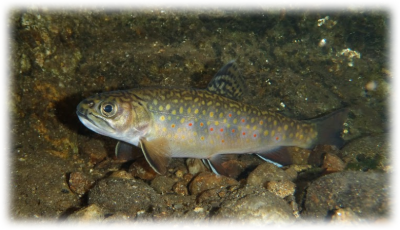| Dr. Jack Clausen Sources Contamination in Waterways
Understanding the source of contaminants in our waterways is crucial for public health and safety, and a University of Connecticut professor is developing an easy way to do just that. All contamination will eventually find its way downstream. In Connecticut that means it may travel through neighborhoods where residents swim, to larger recreational areas such as beaches, and eventually to the Long Island Sound and shellfish beds. And, without knowing the exact source of the problem, the contamination can’t be addressed. John Clausen of UConn’s Department of Natural Resources and the Environment, is now testing a protocol he developed to find the source. Clausen started this project almost by chance when he realized that a method had not yet been developed…Read More |
 |
|
| $1.3M NSF Research Grant Awarded to Dr. Chandi Witharana from the National Science Foundation
Dr. Chandi Witharana and his collaborators from University of Alaska-Fairbanks and University of Virginia recently received a $1.3M research grant from the NSF Arctic System Science program to deepen our understanding on the complex and interlinked processes responsible for the evolution of the pan-Arctic ice-wedge polygon tundra landscape. Tundra wetlands have been called the “Serengeti of the North,” because they are home to abundant wildlife populations that migrate to the Arctic from all regions of the world.These animals, which includes three threatened and one endangered species, rely on Arctic wetlands and their uncertain future…Read More
|
|
|
| Phylogenetic and functional underdispersion in the
Neotropical phyllostomid bat communities
If you look out an airplane window, you may notice the intricate patchwork of forest, cropland, pasture, and urban areas below. Indeed, over 75% of the world has been modified for human land use with small forest patches embedded within these human-dominated landscapes. Researchers are now trying to understand the role that human-modified landscapes play in biodiversity conservation. Drs. Steven Presley, Laura Cisneros (of NRE) and co-authors used an innovative biodiversity approach to study how human land use and forest loss impacts biodiversity of leaf-nosed bats—a diverse group that plays important roles in the ecosystem, such as pollination, seed dispersal and insect regulation—in the tropics. Their multidimensional biodiversity approach incorporates the roles that species play in the ecosystem and allows them to assess the degree to which landscape change filters species with unique..…Read More |
 |
|
Can an old fish predict the future?
Origins of the Greenland shark (Somniosus microcephalus):Impacts of ice-olation and introgression
Evidence suggests that Greenland sharks are among the oldest vertebrates on earth with some estimates dating individual ages back to the arrival of the first pilgrims in what is now Provincetown Massachusetts some 400 years ago. These sharks can grow up to 5 meters in length, can take up to 150 years to reach sexual maturity and love to bask in near freezing Arctic and sub-Arctic oceanic waters. These deep-sea, slow moving predators appear to be carved from ancient stone and have a diet for marine mammals such as seals and even polar bears…Read More |
 |
|
| Are culvert assessment scores an indicator of
Brook Trout Salvelinus fontinalis population fragmentation?
The brook trout is a species of freshwater fish in the salmon family, Salmonidae. The absence of teeth in the roof of the mouth, their light colored spots on a dark colored body, their reduced scales, and variances in skeletal structure are signature to the Brook Trout. It is native to Eastern North America in the United States and Canada, but has been present elsewhere in North America and to other continents. Essentially relating to the species name “fontinalis,” meaning, “living in springs,” Brook Trout tend to grow larger in larger bodies of water…Read More |
 |
Contact the Natural Resources and the Environment Department:
| 1376 Storrs Road, Unit 4087 Storrs, Connecticut 06269-4087 (860) 486-2840 |
twitter.com/uconnnre www.facebook.com/UCONNNRE/ |

